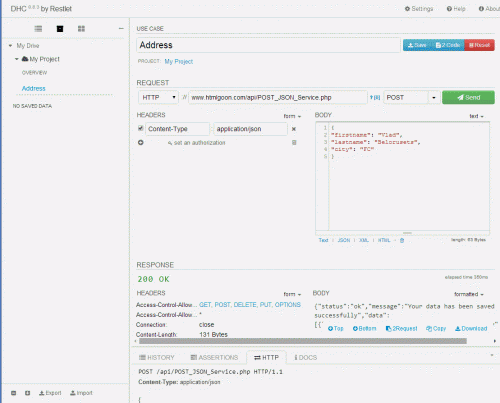How to Give Better Code Reviews – Understanding REST API Testing in Java
— November 24, 2016Modern web application development often relies on REST API as a core architectural approach. Ensuring that this architecture functions reliably requires thorough software testing and verification. Vladimir Belorusets, in his article “REST API Test Automation in Java with Open Source Tools,” outlines a structured approach to testing Java-based REST APIs using accessible and open-source tools. This guide simplifies the key concepts presented in the article while expanding on the methods, tools, and benefits of automated testing in REST API development.

The Automation Process for REST API Testing
The article begins by laying out a systematic process for testing REST APIs. This involves four key stages that guide testers from manual setup to automated validation. Each step plays a critical role in verifying the API’s functionality and ensuring its reliability.
The first step is creating a REST call manually using a REST client tool. This process helps testers understand how the API interacts with different endpoints and gives a baseline for future automated tests. The manual approach sets the stage for identifying issues early and understanding the expected responses from the API.
The second step involves modeling the endpoint response into an object class using an object-oriented programming language, such as Java. By defining the structure of the expected response in code, testers can ensure consistency and clarity when working with data.
Next, the tester generates the same REST call programmatically. The response object from the API is serialized into a file, which serves as the expected result for comparison. This serialization is critical because it creates a fixed reference point for verifying whether the actual API response aligns with what is expected.
Finally, the process concludes with creating a script that issues the REST API call and compares the deserialized response object with the expected object. This automated comparison allows testers to identify discrepancies quickly and accurately, ensuring that the API delivers consistent and reliable results.
Tools for Testing Java REST APIs
Belorusets delves into the specific tools and techniques that can be used at each stage of the testing process. Open-source tools provide accessible solutions for developers and testers, allowing them to implement robust testing frameworks without incurring additional costs.
A REST client tool, such as Chrome’s DHC Client, is highlighted as a user-friendly option for manually composing REST calls. These tools feature graphical interfaces that simplify the process of interacting with API endpoints, making them accessible to both experienced developers and manual testers.
For mapping JSON responses to Java classes, developers can use libraries like Jackson or Gson. These libraries streamline the process of converting API responses into Java objects, reducing the potential for errors and making it easier to work with the data programmatically.
Automating REST calls and serializing responses can be achieved using frameworks like REST-assured or Apache HTTPClient. These tools provide a foundation for building and executing API tests, enabling developers to test endpoints programmatically with minimal overhead. The article includes code examples that demonstrate how to use these tools effectively, offering readers a practical understanding of their application.
Code Insights: JSON Response Mapping in Java
One of the most valuable aspects of the article is its focus on demonstrating how JSON responses can be mapped to Java classes. This process involves creating a data model that mirrors the structure of the API’s response. The model acts as a blueprint, ensuring that the data received from the API is correctly understood and processed by the application.
Belorusets provides code examples that illustrate how to use Java libraries to parse JSON responses and map them to corresponding classes. This approach reduces the complexity of handling API responses and enables developers to focus on building reliable tests. By aligning the data structure of the response with the expected format, testers can quickly identify any deviations that may indicate a problem with the API.
Balancing Manual and Automated Testing
The article emphasizes the importance of balancing manual and automated testing in REST API development. While manual testers can use REST clients with graphical user interfaces to interact with endpoints directly, automation engineers with Java experience can leverage their skills to create comprehensive tests. This dual approach ensures that the testing process is both thorough and efficient.
Manual testing plays a crucial role in the initial stages of development, allowing testers to explore the API’s behavior and identify potential issues early. However, as the application evolves, automated testing becomes essential for maintaining consistency and scalability. Automating repetitive tasks, such as verifying responses and checking for errors, frees up testers to focus on more complex and nuanced aspects of the application.
Conclusion
Vladimir Belorusets’ article provides a clear and actionable roadmap for testing Java REST APIs using open-source tools. By breaking down the testing process into manageable steps, the article equips readers with the knowledge and tools they need to create effective and efficient API tests. The combination of manual and automated testing ensures that APIs deliver consistent and reliable results, meeting the demands of modern web application development.
Whether you are a manual tester exploring API functionality or an automation engineer building advanced testing frameworks, the principles outlined in this guide will help you achieve your goals. With the right tools and techniques, you can ensure that your REST APIs perform reliably and deliver value to users.




